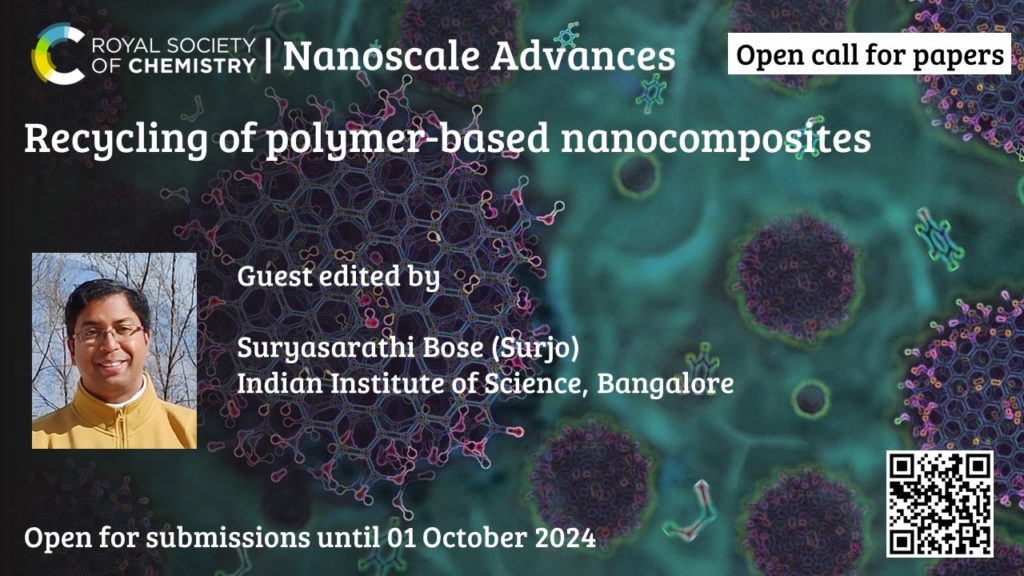Nanoscale Advances publishes experimental and theoretical work across the breadth of the nanoscienes, which are open access and free to read. We are excited to highlight a recent article on the detection of direct Au-B interactions in nanomaterials with the potential for controlling the dynamics of metal atoms on fabricated matrices and a new-generation of nano-devices with wide applications.
In this post, we share insights from our interview with the authors of this paper titled “Experimental and theoretical evidence for unprecedented strong interactions of gold atoms with boron on boron/sulfur-doped carbon surfaces“.

Insights from the authors of a recent Nanoscale Advances article
What aspect of your research are you most excited about at the moment?
“The prospect of using new techniques to explore the chemistry of metals on the nanoscale level, not only for understanding the chemistry of biologically essential metals, but also for applications in disease diagnosis and drug design.”
What do you find most challenging about your research?
“The challenges posed by dynamic metallomics- those of defining on the nanoscale the oxidation states of metal ions, the nature of the coordinated ligands, as well as their coordination geometries and tracking changes on timescales of nanoseconds to years.
Our paper shows we have come close to achieving this for a single gold atom. We dream of using a similar approach to unravel the chemistry of the formation and properties of metallic iron and copper nanocrystals in the brain [https://www.science.org/doi/10.1126/sciadv.abf6707]”
How do you feel about Nanoscale Advances as a place to publish research on this topic?
“Perfect for our current discoveries which are based not only on experimental studies using state-of-the-art techniques, but also on challenging theoretical calculations.”
What is one piece of career-related advice or wisdom that you would like to share with early career scientists?
“Enjoy the excitement of discovery research- the unexpected findings that open up totally new areas of research. That was how our research on single-metal-atom coordination chemistry began!”
Meet the authors
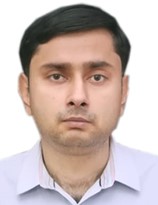
Samya Banerjee (MRSC) received his PhD in 2015 from the Indian Institute of Science. Subsequently, he was a postdoctoral fellow at Johns Hopkins University, USA, a Royal Society-SERB Newton International Fellow at the University of Warwick, UK (with Prof. Peter J. Sadler), and a postdoctoral fellow at the Georg-August Universität Göttingen, Germany. He is currently an Assistant Professor at the Indian Institute of Technology (BHU), India. Recently, he was awarded a 2022 Dalton Division Horizon Prize by the Royal Society of Chemistry for pioneering work on “catalysis of redox reactions in cancer cells by synthetic organometallic complexes”. His research interests include the development of metal-based anticancer, antibacterial and antimalarial drugs. |

Juliusz A. Wolny graduated in Chemistry at the University of Wrocław and completed his PhD thesis in inorganic chemistry. He worked in the area of synthetic chemistry and molecular spectroscopy in the groups of Professors Mikołaj F. Rudolf in Wrocław, Alex von Zelewsky in Fribourg, and Hans Toftlund in Odense. He has also worked in the area of applied quantum chemistry and synchrotron spectroscopy in the group of Professor Alfred X. Trauwein in Lübeck. Since 2006, he has been a researcher at the University of Kaiserslautern in the group of Professor Volker Schünemann. His scientific interest involves the spin-crossover effect, vibrational spectroscopy, conventional and synchrotron Mössbauer spectroscopy and application of quantum chemical methods to inorganic complexes.
|
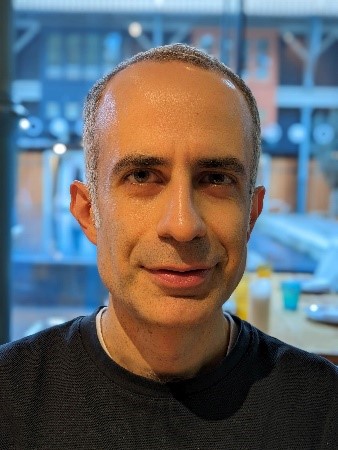
Mohsen is a senior EM staff scientist at the electron Physical Science Imaging Centre (ePSIC) at the Diamond Light Source. His main research is currently on the use of Scanning Electron Nanobeam Diffraction (SEND) for better statistical characterisation of engineering materials via development of automated data analysis workflows combined with script-controlled data collection on the electron microscope. He completed his PhD at the University of Alberta (Edmonton, Canada) in 2010, with thesis on transmission electron microscopy (TEM) characterisation of beam-sensitive Mg-based hydride systems. |
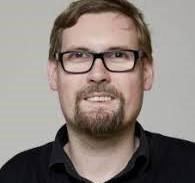 Dedication to Professor Nicolas Barry: Nicolas obtained his PhD at Neuchâtel University in Switzerland in 2011. He was then awarded a research fellowship by the Swiss National Science Foundation to join the Sadler lab in the Department of Chemistry at the University of Warwick. His research on organometallic precious metal carborane complexes encapsulated in polymer micelles opened up an entirely new area of research. Unexpectedly, TEM studies of such micelles with Richard Beanland and Peter Sadler at Warwick led to the discovery that irradiation of these nanoparticles in a TEM instrument rapidly generates a graphenic lattice containing precious metal atoms which migrate to form molecules, clusters and nanocrystals. That work initiated several subsequent studies on single-metal-atom coordination chemistry, and the role of dopants in the formation of metal nanocrystals, including that on gold reported in this current Nanoscale Advances paper. In 2014 he was awarded a Leverhulme Early Career Research Fellowship to initiate an independent career at Warwick, and in 2016 a Royal Society University Research Fellowship, which he took up at the University of Bradford. In 2020 he was appointed to a Professorship there. He excited school students with his enthusiasm for chemistry, leading an exhibit entitled ‘Molecular Music – the sound of chemistry’ at the 2019 Royal Society Summer Science Exhibition, in partnership with Ilkley Grammar School, turning the vibrations in molecules into musical notes. He was a highly talented metal coordination chemist. His research collaborators, colleagues, school-students, friends, and family alike all miss him greatly. Dedication to Professor Nicolas Barry: Nicolas obtained his PhD at Neuchâtel University in Switzerland in 2011. He was then awarded a research fellowship by the Swiss National Science Foundation to join the Sadler lab in the Department of Chemistry at the University of Warwick. His research on organometallic precious metal carborane complexes encapsulated in polymer micelles opened up an entirely new area of research. Unexpectedly, TEM studies of such micelles with Richard Beanland and Peter Sadler at Warwick led to the discovery that irradiation of these nanoparticles in a TEM instrument rapidly generates a graphenic lattice containing precious metal atoms which migrate to form molecules, clusters and nanocrystals. That work initiated several subsequent studies on single-metal-atom coordination chemistry, and the role of dopants in the formation of metal nanocrystals, including that on gold reported in this current Nanoscale Advances paper. In 2014 he was awarded a Leverhulme Early Career Research Fellowship to initiate an independent career at Warwick, and in 2016 a Royal Society University Research Fellowship, which he took up at the University of Bradford. In 2020 he was appointed to a Professorship there. He excited school students with his enthusiasm for chemistry, leading an exhibit entitled ‘Molecular Music – the sound of chemistry’ at the 2019 Royal Society Summer Science Exhibition, in partnership with Ilkley Grammar School, turning the vibrations in molecules into musical notes. He was a highly talented metal coordination chemist. His research collaborators, colleagues, school-students, friends, and family alike all miss him greatly. |
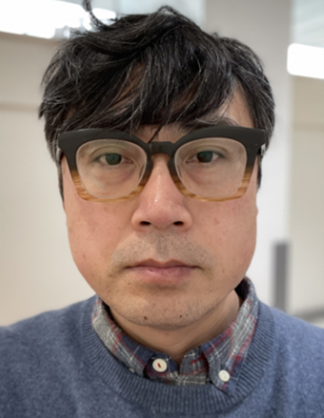
Dr Yisong Han is currently Scientific Officer at the University of Warwick, where he provides advanced scientific and technical support for transmission electron microscopy (TEM) instruments. Before joining Warwick, he gained extensive postdoctoral research experience in characterising a variety of materials using TEM related techniques. He completed his PhD at the University of Nottingham in 2007.
|
|
 Dr Houari Amari is a Research Group Leader at the Leibniz institute for crystal growth (Berlin, Germany). He obtained his MSc (Hons.) from the University of Strasbourg (France) and his Ph.D. from the University of Sheffield (United Kingdom). His Ph.D. was related to investigations of novel semiconductors using advanced transmission electron microscopy (TEM) techniques. Dr Amari’s actual research is focused on achieving atomic-level structural and chemical characterization of a wide range of materials, including semiconductors and dielectrics, using in-situ TEM. Dr Houari Amari is a Research Group Leader at the Leibniz institute for crystal growth (Berlin, Germany). He obtained his MSc (Hons.) from the University of Strasbourg (France) and his Ph.D. from the University of Sheffield (United Kingdom). His Ph.D. was related to investigations of novel semiconductors using advanced transmission electron microscopy (TEM) techniques. Dr Amari’s actual research is focused on achieving atomic-level structural and chemical characterization of a wide range of materials, including semiconductors and dielectrics, using in-situ TEM.
|
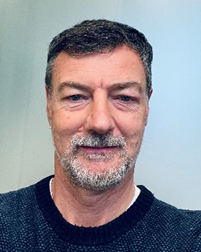
Prof. Beanland is academic director of Warwick’s Electron Microscopy facility and holds a personal chair in the Department of Physics at the University of Warwick, with interests in electron diffraction, structure solution, and atomic-scale characterisation of materials. |
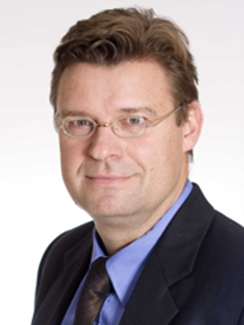
Volker Schünemann studied physics at the University of Hamburg and did his PhD thesis under the supervision of Alfred X. Trautwein at the University of Lübeck, where he worked on the synthesis and characterization of iron nanoparticles in zeolites. This was his first exposure to temperature- and field-dependent Mössbauer spectroscopy. Subsequently, in 1993, he did postdoctoral work on bimetallic FeRh particles in the group of W.M.H. Sachtler at Northwestern University, Evanston, USA. Here the focus was on catalytic properties in CO hydrogenation. After his return in 1994 to the group of Alfred X. Trautwein to the University of Lübeck, he started to work on biological applications of Mössbauer spectroscopy and investigated different classes of iron-containing proteins such as heme and iron-sulfur proteins. In 2004, he became a professor at the University of Kaiserslautern and established a laboratory for temperature- and field-dependent Mössbauer spectroscopy. The focus of his group is on the study of the function and electronic and dynamical properties of iron centers in nature (iron proteins) and coordination chemistry (e.g., spin-crossover compounds, molecular magnets, and biomimetic iron complexes) using conventional and synchrotron-based Mössbauer spectroscopy. Quantum chemical calculations based on density functional theory (DFT) are also used to better understand electronic and dynamic properties. |

Peter obtained his BA, MA and DPhil at the University of Oxford. Subsequently he was a Medical Research Council Research Fellow at the University of Cambridge and National Institute for Medical Research. From 1973-96 he was Lecturer, Reader and Professor at Birkbeck College, University of London, and from 1996-2007 held the Crum Brown Chair of Chemistry at the University of Edinburgh. In 2007, he took up a Chair in Chemistry at the University of Warwick as Head of Department, where he is now a Professor. He is a Fellow of the Royal Society of Chemistry, the Royal Society of Edinburgh, and the Royal Society of London, an EPSRC RISE Fellow (Recognising Inspirational Scientists and Engineers), a Fellow of the European Academy of Sciences, and an Honorary Fellow of the Chemical Research Society of India, and the Chinese Chemical Society. He was awarded the Royal Society 2022 Davy Medal, and 2022 Royal Society of Chemistry Dalton Horizon Team Prize.
|
We congratulate the authors on their impactful work and wish them success in their future academic research!


